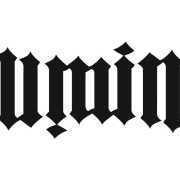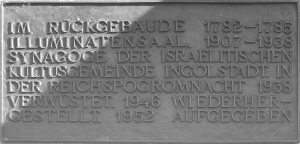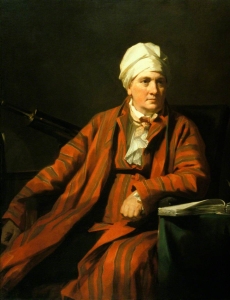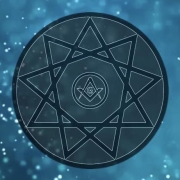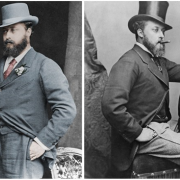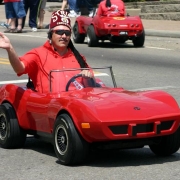In modern culture, there are many references to the Illuminati, a secretive order that controls the world behind the scenes and wants to establish a new world order.
At least, that is what is said about it. The Illuminati play a role in well-known books and films and many famous pop stars hide so-called Illuminati symbolism in their video clips and music.
But who are or were the Illuminati? It is certain that there is a historical origin for this illustrious group.
Rise and fall of the1stIlluminati Order.
In 1717, the first Masonic lodges were founded in England. These were derived from the traditional guilds of stone masons.
Masonic lodges used masonry as a metaphor for symbolic building on their own development and enlightenment ideals and made use of mystical symbols and rituals.
Freemasons mainly wanted to build a better society by means of spiritual development and turned their backs on church dogmas, among others.
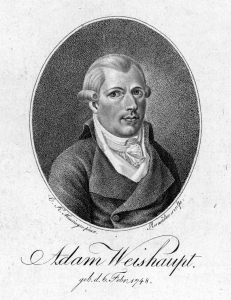
Weishaupt grew up in the Catholic south of Germany. After the death of his father in 1753, he came under the care of Baron Johann Adam Ickstatt, who left Adam's education to the Jesuits. They had appointed him as the curator of the University of Ingolstadt in 1742. He was responsible for the reorganisation of this institution and continued to supervise university policy even after his retirement in 1765. Weishaupt studied law and in 1772 was appointed professor. When Pope Clement XIV banned the Jesuit order on 21 July 1773, he decided to "break with" the Jesuits.
On 1 May 1776, Weishaupt founded the "Bund der Perfektibilisten" or Order of Perfectionists with the help of the Count of Saint-Germain, Master Rakoczy, who in retrospect was probably a fictitious person and Baron Adolph Knigge, a prominent Freemason who only joined in 1780 and left the order in 1784 after accusing Adam Weishaupt of Jesuitism. Weishaupt took the name "Brother Spartacus" and renamed his order the Illuminati. The organisational structure with locally operating cells that were unaware of each other's existence, or as little as possible, was based on the structure of the Order of the Jesuits and was later adopted by occultists, among others. It was only in 1777 that Adam Weishaupt became a member of the Masonic Lodge "Theodor zum guten Rath"in Munich, where he tried to introduce his Illuminati ideas into the doctrines of Freemasonry. He also used Freemasonry to recruit members for his own pseudo Masonic lodge.
At the founding of the Illuminati Order, there were five members, but soon intellectuals and politicians also became part of this organisation. In total, there were approximately 2,500 members, who lived mainly in Germany. Members of the Illuminati had to swear secrecy and were divided into three classes. Only when a member had penetrated to the inner circle was he informed of the secret agenda. In 1777, the Elector of Bavaria, Charles Theodore, banned all secret societies, including the Illuminati. In 1784, the Illuminati planned a coup against the House of Habsburg, but the plot was foiled by police spies who had infiltrated the order in the king's name. This led in March 1784 to the banning of the Illuminati and in June of the same year to the banning of all secret organisations in Bavaria on pain of death, forcing Adam Weishaupt in 1785 to flee to a neighbouring province. This brought a definitive end to the Order. The documents were confiscated and published and Adam Weishaupt finally died in 1830 in Gotha, a district in Thüringen. Some sources assume that he died as early as 1811.
Ingolstadt, the source.
But in the city where it all began, Ingolstadt, this peculiar legacy remains little known among the residents. "Not so many people know about it. But the Illuminati are part of Ingolstadt's history," explains local journalist Michael Klarner outside the old University of Ingolstadt, a modest, church-like building. "The Illuminati was never meant to be noticed but Weishaupt was a revolutionary in many ways," Klarner continues. "He loved the idea of teaching people to be better people. He wanted to change society, he dreamed of a better world, of a better government. He started the Illuminati with the idea that everything known to mankind should be taught, something that was not allowed here at the university."
But the idea of a secret society rebelling against the state has since caught the imagination, encapsulated in conspiracy theories concocted by those who believe the Illuminati never really disbanded. A claim that has been widely debunked by historians. Yet conspiracy theorists say the organisation has been working secretly behind the scenes to undermine authority. The Illuminati has been presented as the party responsible for the French Revolution, the assassination of US President John F. Kennedy and even the terrorist attacks of 11 September 2001, and has been made famous by books and films such as Dan Brown's Angels and Demons.
Weishaupt wanted to change society, he dreamed of a better world. "The Illuminati conspiracy theory is what we call a 'super conspiracy', or basically a conspiracy that controls smaller conspiracies," said Dr Michael Wood of the University of Winchester, an expert in the psychology of conspiracy theories. "People do talk about the Illuminati, but often it's in a funny or self-conscious way, almost mocking the idea of a global conspiracy." And all this began in a modest Bavarian town better known as the setting of Mary Shelley's novel Frankenstein than anything else. Little points to the secret society's founding in Ingolstadt, except perhaps a small, easily missed plaque outside Weishaupt's former home, a pale blue building on Theresienstrasse, marking it as an Illuminati meeting place in the late 18th century. But if you dig a little deeper, there are signs of Ingolstadt's unlikely role in history.
Hidden behind two sets of metal doors in the Stadtmuseum Ingolstadt, city archivist Maria Eppelsheimer worked through row upon row of centuries-old books in search of Ingolstadt's Illuminati past, written in the words of the founder himself. The thick smell of aged paper filled the narrow spaces between each bookcase, from which precious archaic hard covers and delicate manuscripts protruded. "I think it is one of the most interesting subjects we are looking at here," said Eppelsheimer as she studied the dusty writings in a section devoted exclusively to the history of Ingolstadt. She carefully pulled out one of the smallest books on the shelf. It is "Apologie der Illuminaten", a work from 1786, written by Weishaupt in which he defended the founding of the Illuminati shortly after his exile from the city.
"It's crazy what the Illuminati are made of," the archivist said as she flipped through the pages of the worn manuscript. "What it is made of has nothing to do with the real Illuminati". More of Weishaupt's words can be found in small, unassuming volumes hidden in the city's vast archive. It is as if more than two centuries after its creation, Weishaupt's Illuminati has remained as elusive as possible. However, there are some people in Ingolstadt, like Klarner, who are actively trying to bring this unusual historical legacy to light. "You know that Frankenstein is said to be based in the city because of the Illuminati," Klarner enthuses. During a short tour of Ingolstadt's historical and religious sites, he explains, "At the time of the French Revolution, there were already theories that the revolution began in Ingolstadt and that the Illuminati were the intellectual fathers of the revolution. This is why many literary theorists believe that Mary Shelley knew about Ingolstadt, and why Frankenstein was then placed here."
The2ndIlluminati Order
At the end of the 19th century, the Illuminati was revived by science fiction author Leopold Engel, who claimed that his order was related to Weishaupt's and that the origins of the Illuminati lay in the ancient cultures of Egypt and India. He associated himself with, among others, the British occultist Aleister Crowley, who has also been accused of Satanism. The Order of Angel continued to exist until 2008. In that year, Annemarie Aeschbach died as the last leader of this group. After that, the Illuminati remained active to a limited extent and many other associations have taken over the Illuminati name.
Conspiracy theories
To this day, the idea of hidden purposes that are not known to the entire organisation recurs in conspiracy theories. Conspiracy theories surrounding the Illuminati have never fully died out, and were even used by fascist and other far-right groups in the period between the First and Second World Wars.
The first conspiracy literature on the Illuminati appeared in 1797. A number of authors, including the Scottish mathematician John Robison, wrote that the Illuminati operated underground and were very influential. In the same year the book Memoirs Illustrating the History of Jacobinism by the reactionary Catholic Augustin Barruel appeared, which claimed that the Illuminati were responsible for the French Revolution of 1789. As successors to the Templar Order, which had been destroyed by the French king Philip the Handsome in 1314, the Illuminati wanted to take revenge on the monarchy and Christianity and establish a new world domination. In 1806, J.B. Simonini reacted to this in a letter in which he claimed that the illuminati, and also the freemasons, were founded by Jews who wanted to conquer world power. Historian Norman Cohn considers this letter by Simonini as the origin of the myth of the world conspiracy of Jews and Freemasons: the anti-Semitic conspiracy theory that helped to cause the Holocaust. In Hermann Goedsche's 1867 novel 'Biarritz', this theory reappeared: one chapter described how chiefs of twelve Jewish tribes met every century to discuss the secret plan to conquer world domination. Unfortunately, this chapter was reproduced in other publications as a factual account and thus led to 'The Protocols of the Wise Men of Zion'. This text was written to resemble a statute drawn up by Jewish leaders plotting and eventually became one of the Nazis' most important propaganda texts. Extreme right-wing activists in the US and radical Muslims also use this anti-Semitic text.
In the 1960s there was also a battle against fake news.
A journalist from Playboy Magazine named Robert Anton Wilson, together with the writer Kerry Thornley, wrote a funny text about the Illuminati. The two men decided that the world was becoming too authoritarian and one way to make that clear would be to get people to question what they were reading. The pair started sending fake letters from readers talking about a secret organisation called the Illuminati. In response, more letters were then sent that contradicted these claims. They hoped that these opposing views would cause people to view the news more sceptically. Instead, everyone became very enthusiastic about the Illuminati and the myth spread around the world.
Other, more popular conspiracy theories arose in 1975, when the trilogy 'Illuminatus' by Robert Joseph Shea and Robert Anton Wilson was published. In this story, Weishaupt is said to have gone to America and founded the United States in the name of George Washington. It is striking that the Great Seal of the USA, as also depicted on the dollar note, contains a number of symbols that are attributed to the Illuminati. It shows a pyramid with an 'all-seeing eye'. The pyramid consists of thirteen steps, which are said to symbolise thirteen Illuminati bloodlines, and at the bottom is written in Roman numerals 1776, the year in which the Bavarian Order of the Illuminati was founded. The eye is supposed to represent the eye of Lucifer, the devil. In reality, the year refers to the birth of the United States. The all-seeing eye is a symbol for the eye of God. And the thirteen steps represent the original thirteen states of America.

It is a very old, powerful and closely guarded organisation that secretly controls the entire modern world, probably while wearing cloaks and performing devilish rituals. This is done by infiltrating the media and brainwashing everyone. This organisation is behind every conspiracy you can think of, such as the fake moon landings in 1969, the assassination of John F Kennedy and 9/11. The Illuminati have existed since the beginning of time. Their logo can be seen on the pyramids and they played an important role in the life of Christ. Top members are Queen Elizabeth, the Beatles, Katy Perry, Beyoncé, Jay Z, Madonna, Kim Kardashian, Lady Gaga and Rihanna, who are actually lizards from a race that existed before the age of man.
Illuminati symbolism in contemporary culture
The use of Illuminati symbolism in pop culture dates back to The Beatles. Here, too, conspiracy theories come into play. From the release of the album Sgt. Pepper's Lonely Hearts Club Band (1967), Illuminati symbolism could be detected in the Beatles' work and in photographs, such as the buck greeting and the number 666. One theory is that members of The Beatles were brainwashed by an Illuminati organisation. This organisation wanted to get a grip on the world and The Beatles were enormously popular in the 1960s. This theory also explains John Lennon's statement "we are more popular than Jesus".

In today's music industry, pop and rap stars such as Madonna, Jay Z, Lady Gaga, Rihanna and Beyoncé make extensive use of 'hidden' Illuminati symbolism. Lady Gaga, Jay-Z and Rihanna are particularly daring: symbols such as horns, pyramids and the all-seeing eye are usually incorporated into their shows or clips. Singer Rihanna - who recently started collaborating with none other than Beatle Paul McCartney - showed the phrase 'Princess of the Illuminati' in a clip. The hidden Illuminati symbols seem to be part of a brilliant marketing strategy and generate a lot of attention for the artists. On the Internet, young people exchange information about the latest discoveries and there is much speculation about the link between pop stars and the Illuminati. For example, big stars are said to have sold their souls to the devil in exchange for fame. Madonna's new album, Rebel Heart, includes the song Illuminati, a very explicit reference. In this song, she makes it clear that Truth and Light are more important than the typical symbolism and warns her audience not to turn it into something unsavoury. This warning is not entirely unjustified: after all, history shows that Illuminati conspiracy theories are dangerous, especially when large groups of people take them for granted. How long the trend of spotting Illuminati symbols in clips and music will continue remains to be seen. The more explicit and often this symbolism is used, the less interesting it becomes to track it down.
The last Illuminati order, the Scammers.
That good-for-nothing on the other side of the internet decides one day that the Illuminati are the ideal theme on which to hang his scam organisation.
Thus, an extensive network of spam and scam e-mails is set up in which the gullible Internet user is swindled out of a lot of money.
They ask for a photo and information about where you live, for the eventual "initiation ceremony". Of course, if you pay, you get access to "secret materials", a top secret Illuminati ID card and immediately the payment via Western Union. Once the money is sent, there is little chance it will ever be returned.
Don't fall for it.
Source material:
"Flirting with the Illuminati in pop culture" - Trouw
"Illuminati symbolism in pop culture is fodder for weird conspiracy theorists" - Elsevier
"Hip sect" - De Volkskrant
"Nesta Webster and the Illuminati" - Skepsis.nl
"Illuminati" - HoaxWiki
"Scientias, The Illustrious Illuminati"
"What is the Illuminati" - Martha Gill
Thierry Stravers is co-owner of Masonic Store.
He likes to combine his passion for style and elegance with his Masonic activities.
Thierry is the owner of Trenicaa marketing agency and is a board member of Loge Enlightenment No.313 O: Hoofddorp.

